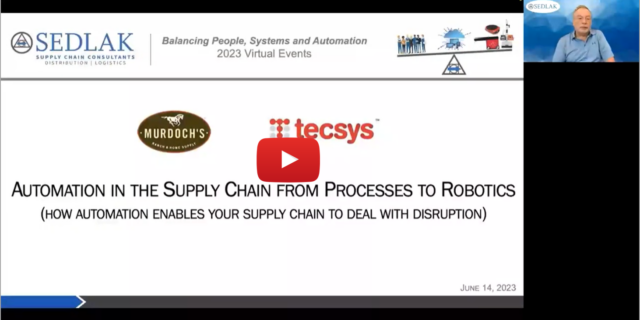Distribution Strategy and the Changing Dynamics of the Pharmaceutical Supply Chain (Pt. 4)
October 31, 2014 By: Senior Management | Topics: HealthcareThis series has studied the evolution of pharmaceutical distribution and the emergence of optimized and flexible supply chain infrastructures as a means to mitigate risk and gain competitive advantage.
In this post, I outline the challenges and primary functions of distribution network strategy development.
Part 4: 5 Key Components of a Distribution Network Assessment
With the industry-wide changes occurring within the healthcare supply chain, many pharmaceutical manufacturers and distributors are reassessing their distribution network models. The million-dollar question then becomes… “How many distribution facilities are needed to optimize our customer service at the lowest total cost, factoring transportation, facility, labor, equipment and inventory?” and “Where should these DCs be located?”
Most pharmaceutical manufacturers have a large manufacturing location, or multiple locations, with a distribution center on-site where finished inventory is held until it is needed downstream into the supply chain. Or, finished product may be held in multiple off-site distribution centers. That network model has proved workable for dry formulation products, providing a good level of inventory security. However, the escalating presence of biologics and their temperature control requirements negate that model as the best place to house such inventory. Biologics might be better warehoused closer to the end user to avoid a longer and more expensive transportation process, especially considering such products have a shorter shelf life.
Fundamentally, because large inventories of biologics cannot be warehoused for long time periods, in essence this inventory is being taken out of the system, and inventory redundancy is a historical way to mitigate risk. So, the strategy becomes how to design flexibility into a distribution network to mitigate this risk.
The challenge here is assessing the best distribution network model for handling both types of diverse product lines. Developing a successful distribution network optimization plan poses significant challenges, even for the most seasoned supply chain executives.
The components comprising a comprehensive distribution network optimization are organized into five primary functions:
- Data Discovery – Precise detailing of a company’s distribution network should be the initial step. Both business and facility discovery identifies assets, capacities, facilities, operational processes and performance.
- Predictive Analysis – Used to determine future infrastructure requirements. What-if analysis is used to show the tradeoffs of various demand levels with different network configurations.
- Baseline Model – Utilizing information gained from Data Recovery and Predictive Analysis, a baseline model is built of the existing distribution network, to which alternative scenarios can be compared.
- Modeling – Given fixed or variable inputs, modeling will process events and calculations to produce scenarios for expected throughputs.
- Strategic Plan – Once the supply chain model is defined, a distribution strategic plan is developed that aligns the company’s business, technology, operations, vendors and customers.
Assuming that the above steps are conducted comprehensively, the resultant strategic plan provides a comprehensive roadmap for achieving an optimal network configuration, and enables tactical implementation plans for moving forward.
In my final post in this series, I will summarize the need for a broad perspective in managing supply chain risk.
Sedlak Management Consultants is a supply chain consulting firm specializing in distribution consulting. Founded in 1958, Sedlak’s broad experience in network strategy, facility design, distribution/fulfillment, and information systems allows us to integrate the latest technology, best practices and industry benchmarks to help our healthcare clients achieve supply chain excellence.
We hope that you will find the insights contained in this series helpful to your business. If there is any way we can be of assistance with your supply chain and logistics strategy development, please feel free to contact us by filling out the form below.





